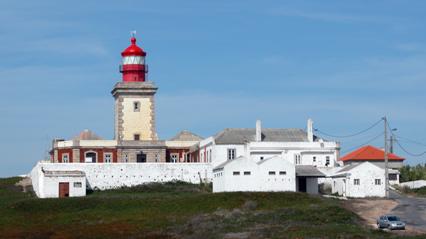Back in January 2004 Martin Wright, one the club’s
most sociable regulars at the London Meetings, royally
entertained a packed Crown Court with tales of his
marathon cycle ride to Australia! Many in that audience
will remember his great photos, distinctive narrative
style and his thirst for adventure. Well Martin is at it
again – this time he’s go back to the land
down under to ‘pick up his bike and have a look
round’. I think too many cold winter nights provided
the motivation to get back on the road! This is the third
in an occasional series, based on Martin’s emails,
and charts his offbeat approach to the road ahead.
14 September: “Hello everybody…
far as I remember the last time I wrote was way back in
Exmouth some weeks ago. Quite a lot has happened in
that time and I will try to recount some of the moments.
On leaving Exmouth I had a shocking headwind for two days
which made me wonder why I left and why I do this sort of
thing. Somebody suggested I must be a 'bloody
stupid pommie masochist'. No prizes for guessing
it was an Australian ! The distances between towns
were now as much as 600 kms with a couple of roadhouses in
between, which were very convenient in that I could buy
supplies and have a shower but the prices were pretty
bloody steep and things like bread and milk were usually
out of date ! Even Mrs Mac's famous beef pies
had usually been warmed through for the 10th time and as a
result were almost inedible… One of the
roadhouses wanted to charge me $19 for a camping spot on
solid ground with no shade – I asked for a discount and
was told 'if you don't like it you can xxxx
off.' I did xxxx off and about 10kms along I
found a very nice spot in the bush for free at which I was
later joined by a French family who served me tea made
with tea leaves from a teapot. Fantastic !!
Bumped into a few interesting people on the way and was
almost bumped into by road-train drivers and some of the
less capable caravaners. Throughout the state of
Western Australia the government set up many rest areas
some of which are for overnight stays – they vary in
standard and size. Some you can camp a long way from
the road so the noise from the passing road trains is
minimal. Some are situated next to rivers which can
be good for fishing or swimming but some have crocodiles
in so it is advisable not to swim in these unless you are
a tour bus driver and trying to impress the females on
your tour… Many times I was fed and watered by the
caravaners who are obviously very good drivers – sometimes
the meals produced were quite amazing. At one stop I
was given a starter, main course and a sweet. Beer
and wine was also consumed, after I had arrived thinking I
would be eating three day old sandwiches and
noodles. In Broome I stayed at the Roebuck caravan
park and met an English couple who fed me. I was on
a mission here to fatten myself up and ate almost non stop
for two days – it was a mistake as it made me feel very
sick. Further on I met an English hippie called
Jupiter who really was from another planet.
I was a little behind time so I had a few big cycling days
ahead of me in order to get to Darwin and renew my
visa. The ride from Broome to Derby was very hot but
allowed me my first sighting of the Baobob tree in various
shapes and sizes. The older ones having a huge girth
were used by the early settlers or police to imprison the
Aboriginals in the hollowed out tree trunks. Also
hundreds of thousands of termite mounds abounded, some of
which are thought to be over two hundred years old.
Quite a few termites in each mound I reckon… The
ride from Derby to Fitzroy Crossing, Halls Creek and on to
Kununurra was very spectacular. As I was in a hurry
I had no time to go visiting some of the famous sites of
the Kimberleys – Gibb river road, horizontal
waterfall, Geikie gorge, Bungle Bungles, Wolf creek
crater. Maybe I will come back some day and purchase
a four wheel drive vehicle…
The ride across to Katherine was also very good…
was lucky now as I had a tailwind which made cycling very
easy. I met six cyclists in two days: a German named
Pierre?, an Australian named Ricky and an American named
Rob who also camped overnight at the 62 mile camp rest
area. I was quite jealous of him as he is riding a
bike which I have dreamed of having for sometime – my next
bike will be the same. Next day I met three more
cyclists. A man & a woman on a tandem and soon after I
met Gary who was riding his recumbent cycle. Rode on
to Katherine where I had time for a rest day and again fed
myself very well and drank a lot of beer. A hot
spring ran alongside the Victoria river behind the caravan
park… very nice place to relax for a while.
The ride from Katherine to Darwin was with a tail wind so
I cruised along quite nicely to within 8 kms of the city
centre where I found a caravan park in which to pitch my
tent for a few days. I have since renewed my
visa so I can stay for another six months which is plenty
of time for me to cycle down to Sydney. A little
fattening up here then I will be on my way…
15 October: “Hi all ! Have made
it as far as Mount Isa in the police state of
Queensland. Intended to stay just a couple of days
although have now been here for four nights and still not
ready to leave. I am staying at a place called,
'tourist haven', which is a backpacker’s
hostel and sleeping in a bed for the first time since
Perth, about three months ago, was an absolute
delight. I had forgotten just how soft and
comfortable a mattress can be ! No hard ground, no
stones piercing through my sleeping mat, no ants finding
their way into my food bag & sleeping bag ! No
bugs flying into my tent due to the fact that it can no
longer be zipped closed due to a buggered zipper !
Actually the tent is in need of replacing more due to the
struggle to get out when I wake up for a pee in the middle
of the night. This has resulted in my falling onto
the poles and snapping three of them… also fallen
onto the tent when returning to the tent after being
forced to drink too much beer!
The road from Darwin to Tennant Creek I had travelled two
years previously. From Tennant, I road
back to a roadhouse called Threeways, across the Berkley
highway to Camooweal and on to Mount Isa. Only one
roadhouse before Camooweal and a few rest areas with water
tanks so I had to carry a lot of food. I met Shirley
once again – she is the 72 year old woman who makes me tea
all the time and talks at you constantly, often repeating
herself! I feel like a verbal punch bag. She
often drove behind me on the road for a few kilometres,
protecting me she said from the vehicles driving at a high
speed. I had to pull over and make her drive on and
I was glad to reach Camooweal where I was able to escape
her by staying in a caravan park, while she camped down by
a river. In Mount Isa I was in the presence of true
greatness – his name, Heinz Stuck, who had been cycling
since 1963 and visited every country in the world.
Overall he’s cycled 500,000 kms and is now age 64
and still going strong ! We drank a lot of beer
together and got very, very drunk…
22 October: “Hi all. Since
writing from MountIsa I have had a torrid time. It
was hard to leave, not because it was a town of beauty or
interest – it is a mining town with very little to offer
apart from a good salary if you work at the mine. It
was hard to leave because I would be leaving my very
comfortable bed with the thick, soft mattress. Now
it was back to my tent with the broken zips, holes in the
fly sheet & inner and holes in the ground sheet.
The ride from MountIsa to Cloncurry was a mere 120kms but
it was the hardest days riding I have had to date…
It was bloody hot; 42c ! I had a headwind which kept
my average speed at around 16kph, so it was a long day in
the saddle. My water tasted terrible when cold and
even worse when warmed by the sun. On arrival in
Cloncurry I bought 2 litres of full fat milk which was
drunk in very quick time… of course made me feel
very sick. At the caravan park, after putting up the
tent, it was straight into my sleeping bag and I slept for
twelve hours.
Had a rest day before cycling onto Mckinlay, site of the
Walkabout Creek Hotel, made famous in the Crocodile Dundee
movies. This is a town of about 12 people and one
bloody great big Goanna which seems to have the freedom to
walk up & down the main street as it takes care of the
snakes in the area. It frightened the living
daylights out of me ! Next day was a short
ride to Kynuna… to here is the site of the
Billabong made famous in the Waltzing Matilda yarn by A.B.
Paterson. There’s also a famous pub in town
called, the Blue Heeler Hotel. A bloody good pub,
with many items of clothing hanging from the ceiling and
walls left by people travelling through town. Next
up a very big ride followed all the way to Winton…167
kms of the most tedious landscape in Australia. The
road from one horizon to another seemed exactly the same
and as the morning ride was into a headwind, I thought I
would be riding well into the evening.
Luckily the wind changed after a short lunch break and the
afternoon ride was almost effortless. Winton is an
interesting little town and the population has been
increased due to a film crew in the area about to make a
film. I found good food here and a pub which sells
Guinness so I will partake of a few pints this very
evening…
 As part of our
time there we went to see a local group of women rehearsing
traditional Mozambique song (see picture, left). We were
merely walking by when we were invited to sit in on the group
during practice. Listening to the women and drums as the sun
set and the tide came in really will be a lasting memory of
my time spent in East Africa. Later that day we caught a dhow
(traditional African/Arabic sail boat) from Palma all the way
back to Mikindani. This again will stay with me for the rest
of my life as one of the most authentic experiences of the
lives people lead in this part of the world. These sorts of
experiences, however overused the cliché may be,
really are priceless. Money cannot buy memories and certainly
looking at the people of Palma or Mikindani, plays no part in
happiness or generosity. This sort of journey, away from the
beaten track and reach of the guidebooks is highly
recommended and, although not to everyone’s taste, will
provide lasting memories to anyone willing to embark on
them.
As part of our
time there we went to see a local group of women rehearsing
traditional Mozambique song (see picture, left). We were
merely walking by when we were invited to sit in on the group
during practice. Listening to the women and drums as the sun
set and the tide came in really will be a lasting memory of
my time spent in East Africa. Later that day we caught a dhow
(traditional African/Arabic sail boat) from Palma all the way
back to Mikindani. This again will stay with me for the rest
of my life as one of the most authentic experiences of the
lives people lead in this part of the world. These sorts of
experiences, however overused the cliché may be,
really are priceless. Money cannot buy memories and certainly
looking at the people of Palma or Mikindani, plays no part in
happiness or generosity. This sort of journey, away from the
beaten track and reach of the guidebooks is highly
recommended and, although not to everyone’s taste, will
provide lasting memories to anyone willing to embark on
them.

 The fact is that the
call for a tourism boycott comes from Burma's elected
leaders. The National League for Democracy (NLD), who won a
landslide victory in Burma's 1990 election, remains the
only party mandated to represent the Burmese people and it is
a party that continues to draw the support and respect of
people inside and outside the country. Burma's Government
in exile, the National Coalition Government of the Union of
Burma (NCGUB), supports the boycott and it is a position that
has the backing of exile Burmese democracy groups around the
world.
The fact is that the
call for a tourism boycott comes from Burma's elected
leaders. The National League for Democracy (NLD), who won a
landslide victory in Burma's 1990 election, remains the
only party mandated to represent the Burmese people and it is
a party that continues to draw the support and respect of
people inside and outside the country. Burma's Government
in exile, the National Coalition Government of the Union of
Burma (NCGUB), supports the boycott and it is a position that
has the backing of exile Burmese democracy groups around the
world.
 The article also fails to mention
that in Burma many human rights abuses are directly connected
to the regime's drive to develop the country for
tourists. Throughout Burma men, women and children have been
forced to labour on roads, railways and tourism projects;
more than one million people have been forced out of their
homes in order to 'beautify' cities, suppress
dissent, and make way for tourism developments, such as
hotels, airports and golf courses. And these abuses are not
confined to history. In February 2004, for example, Burmese
soldiers rounded up ethnic Salons, or 'sea gypsies'
who normally live on boats in the Mergui Archipelago, forced
them to live on land and to take part in a 'Salon
Festival' aimed at foreign tourists.
The article also fails to mention
that in Burma many human rights abuses are directly connected
to the regime's drive to develop the country for
tourists. Throughout Burma men, women and children have been
forced to labour on roads, railways and tourism projects;
more than one million people have been forced out of their
homes in order to 'beautify' cities, suppress
dissent, and make way for tourism developments, such as
hotels, airports and golf courses. And these abuses are not
confined to history. In February 2004, for example, Burmese
soldiers rounded up ethnic Salons, or 'sea gypsies'
who normally live on boats in the Mergui Archipelago, forced
them to live on land and to take part in a 'Salon
Festival' aimed at foreign tourists.
 A walk around
Mikindani shows little evidence of current military activity
but the historical signs are more common. The Mtwara airstrip
was an RAF base, the customs house was destroyed by naval
artillery and subsequent neglect, the splendid hotel is a
fortified building. The Boma is no great castle but would
have been a hard nut to crack. The crenulations (saw teeth
type things you get at the top of castles) on the bastion at
the back are wide enough to accommodate the large water
cooled barrel of the Maxim machine gun whilst those on the
tower could only fit a rifle. Both employed at the time of
construction.
A walk around
Mikindani shows little evidence of current military activity
but the historical signs are more common. The Mtwara airstrip
was an RAF base, the customs house was destroyed by naval
artillery and subsequent neglect, the splendid hotel is a
fortified building. The Boma is no great castle but would
have been a hard nut to crack. The crenulations (saw teeth
type things you get at the top of castles) on the bastion at
the back are wide enough to accommodate the large water
cooled barrel of the Maxim machine gun whilst those on the
tower could only fit a rifle. Both employed at the time of
construction.

